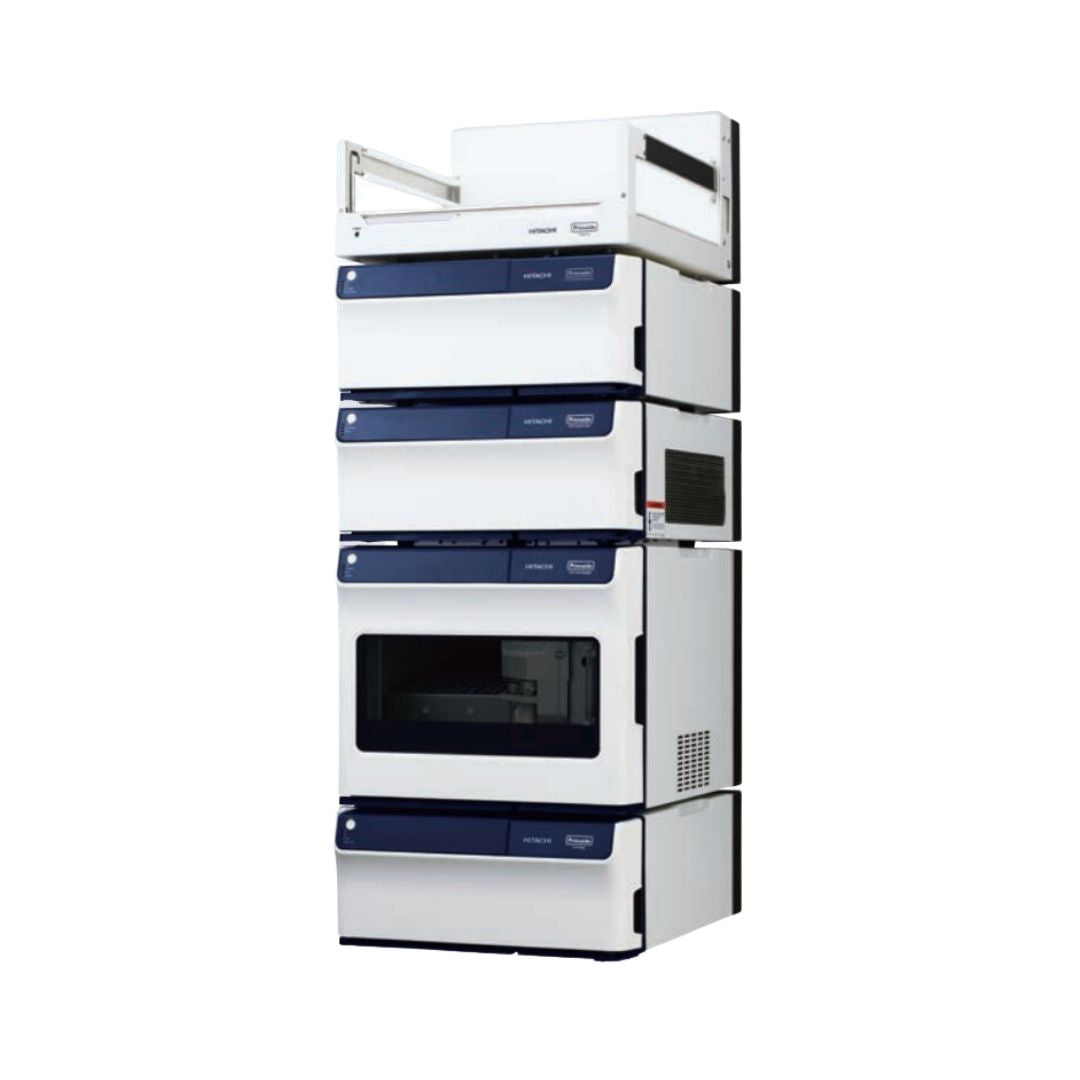Description
Primaide HPLC System Features
-
Optional units mounted inside provide clean appearance
All principal options, including a degasser, gradient unit, and sample cooling system can be mounted inside the main body. It is not necessary to make room for optional units. -
Front access layout for improved operation and maintenance
Every module is accessed and handled from the front. Since connections are arranged on the front, it is easy to replace columns and manipulate the flow system. For easier maintenance, the lamp and cell unit are also easily accessible. -
Leak sensors in all modules
Any leakage in the flow system is detected by leak sensors built into each module. After detection the system halts, ensuring improved safety and reliability. -
Complete control with system manager
A control panel is not necessary, as everything can be controlled via the system manager. By installing a UI- pad (optional), each module can be controlled separately. -
e-Line and USB
The e-Line is an advanced version of the existing D-Line. All modules are connected by an e-Line in a single chain, and all the communications are integrated. The use of digital signals improves the reliability of data transactions. The interface between the PC and equipment is via versatile USB. A wide range of PCs are supported, enabling flexible configuration.
Primaide 1410 UV Detector Features
-
Low noise for high-sensitivity detection
The Primaide 1410 UV detector achieves a noise level of no more than 0.6 × 10 -5 AU, greatly enhancing trace component analysis. -
High response and low noise for rapid analysis
Low-noise measurements in 0.05 seconds.
High-sensitivity detection rapidly yielding sharp and accurate peaks. -
Stable, without influence from ambient temperature changes
Since local environments may vary considerably, the optics of the UV detector is well designed to avoid the effects of daily and seasonal temperature changes, ensuring stable and reproducible results. -
Wavelength measurement in the UV region with a built-in Hg lamp
Use the 254-nm emission line of the mounted Hg lamp to test the accuracy of wavelength measurement in the UV region, which is the most utilized region in liquid chromatography. This test is conducted using 3 wavelengths from the Hg and D2 lamps, enabling highly reliable analyses across a broad wavelength range. -
Front access layout and easy maintenance
Both the lamp and flow cell are replaced through the front of the module, allowing easy maintenance, regardless of where the instrument is installed. (Lamp replacement)
Specifications

Additional Resources
Application Library
Catechins are important antioxidant components found in tea. Due to their antioxidant properties and wide range of efficacy, research of catechins has been receiving an increasing amount of attention. The catechin profile in tea has been found to differ depending on the method of tea preparation. In addition, the catechins in tea form thermal isomers during the sterilization process of commercially available bottled tea drinks. The concentration of thermal isomers reaches significant levels, and, as such, the physiological function of these isomers is also of interest. The following describes examples of analysis of catechins and caffeine in tea.
Analysis of Organic Acids using UV Detection
Organic acids are known as ingredients that determine the taste and flavor of foods. In addition to the food sector, many other areas such as pharmaceutical and chemical industries, environmental analysis, and biotechnology, analyze organic acids.
Analysis methods of organic acids include UV detection (detection of absorption of carboxyl groups), electrical conductivity detection (detection of ionic compounds), a method using pH indicators (visible absorption detection of pH changes caused by acidic components) and a post-column derivatization method for high selectivity of detection. An appropriate method must be selected based on analysis samples and purposes.
The following describes examples of analysis of organic acids using a portable UV detection system and the reversed-phase column, "LaChrom C18-AQ".
Simultaneous Analysis of Phenoxyethanol and Parabens
Paraben is a generic term for p-hydroxybenzoate esters. Due to their low toxicity in the human body, as well as antiseptic and mold proofing effects, parabens are used as preservatives in medicines, cosmetics, and foods. Phenoxyethanol is another component used as a germicide and antiseptic in cosmetics. It is a naturally-occurring compound that is found in substances such as green tea.
Phenoxyethanol is often used in combination with parabens in cosmetics to reduce the added paraben content.
In this presentation, we will introduce and examine the simultaneous analysis of phenoxyethanol and parabens.
Analysis of Artificial Sweeteners
Examples of analyses for aspartame in (1) carbonated drink and (2) apple cider vinegar drink are introduced here.
These data are an example of measurement; the individual values cannot be guaranteed.
The system is for research use only, and is not intended for any animal or human therapeutic or diagnostic use.



